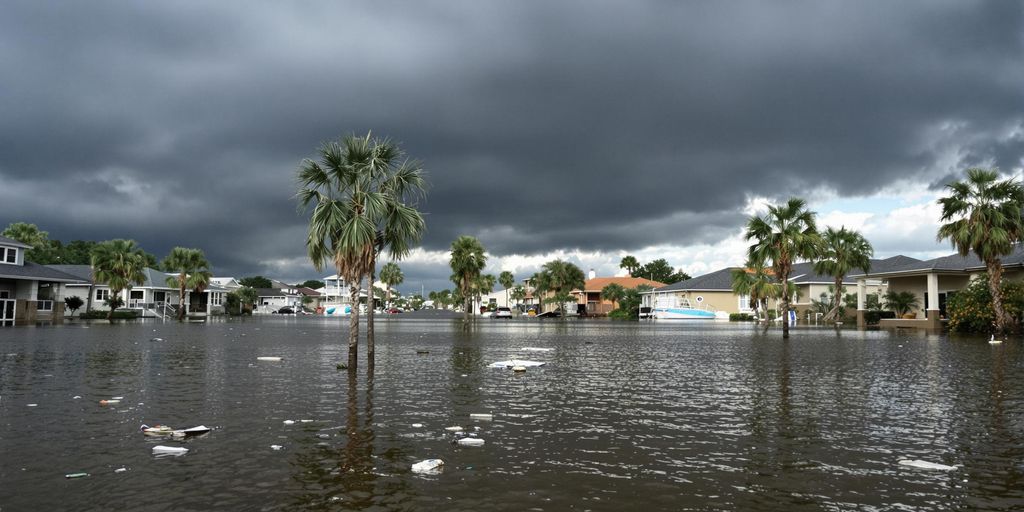Florida’s real estate market faces an escalating threat from climate change, with rising sea levels, more intense hurricanes, and increased flooding impacting property values and insurance costs. While some residents are leaving the state due to these concerns, the market has shown surprising resilience, though a slow shift in buyer behavior is beginning to emerge.
The Shifting Sands of Florida Real Estate
Florida’s once-booming real estate market, valued at $180 billion, is showing signs of strain. After years of severe hurricanes and scorching temperatures, the state’s reputation as an idyllic place to live is being challenged. Data from November 2024 indicates $139.3 billion in monthly single-family home sales, with an additional $41 billion from townhouses and condos. However, RedFin reports a decrease in investor purchases, with Fort Lauderdale seeing a 23.8% decline and Miami a 19.4% decline. Overall, Florida experienced a 10.2% drop in homebuying from October 2023 to October 2024, and the average time a home stays on the market increased by over a third to 67 days.
The Climate Denial Bubble
Despite the clear and present dangers of climate change, many experts describe a "climate denial bubble" in Florida’s real estate market. Property values have continued to rise, even in areas severely impacted by flooding. For example, a home in Miami Springs sold for nearly $250,000 more than its purchase price, despite repeated flooding. Studies have estimated that Florida’s real estate is overvalued by billions due to flood risks alone. However, real estate professionals note that affordability, proximity to work, and school quality remain higher concerns for buyers than flood resilience.
Insurance Woes and Market Resilience
Skyrocketing insurance costs are a significant factor influencing the market. Eli Beracha, director of the Tibor and Sheila Hollo School of Real Estate at Florida International University, warns that dramatic increases in insurance prices will negatively affect home prices, making homeownership unaffordable for more people. The Florida Optional Reinsurance Assistance (FORA) program, established in December 2022, aims to protect homeowners from exorbitant rates in high-risk areas. Despite these challenges, the market has shown resilience:
- Post-Disaster Price Increases: Analysis of home sales in flood-prone areas reveals that property values often increase after disasters. For instance, in Key Largo’s Stillwright Point, median home prices rose by $20,000 after 90 days of flooding in 2019, and are now almost $200,000 higher.
- Short Memories: Real estate analyst Ana Bozovic notes that buyers tend to overlook past flood events, with the market rebounding quickly. "If people really want to be in a region, they’re willing to overlook things like this. Six months later, it’s like it never happened," she stated.
A Slow Shift in Attention
While a sudden market crash is not widely anticipated, a "slow leak" from the denial bubble is possible. Real estate websites like Zillow and Redfin began prominently featuring climate risks in 2020, and internal research suggests this is influencing buyer decisions. A 2022 Redfin study found that buyers with flood risk information are more likely to choose homes with lower flood risks. Phrases like "high and dry" are increasingly used in property listings after flood events, indicating a growing "climate attention" among buyers and sellers. This suggests that while the market has been resilient, a gradual shift in buyer preferences towards less vulnerable properties may be underway, particularly in areas like Florida’s Gulf Coast that have experienced a string of recent hurricane strikes.


